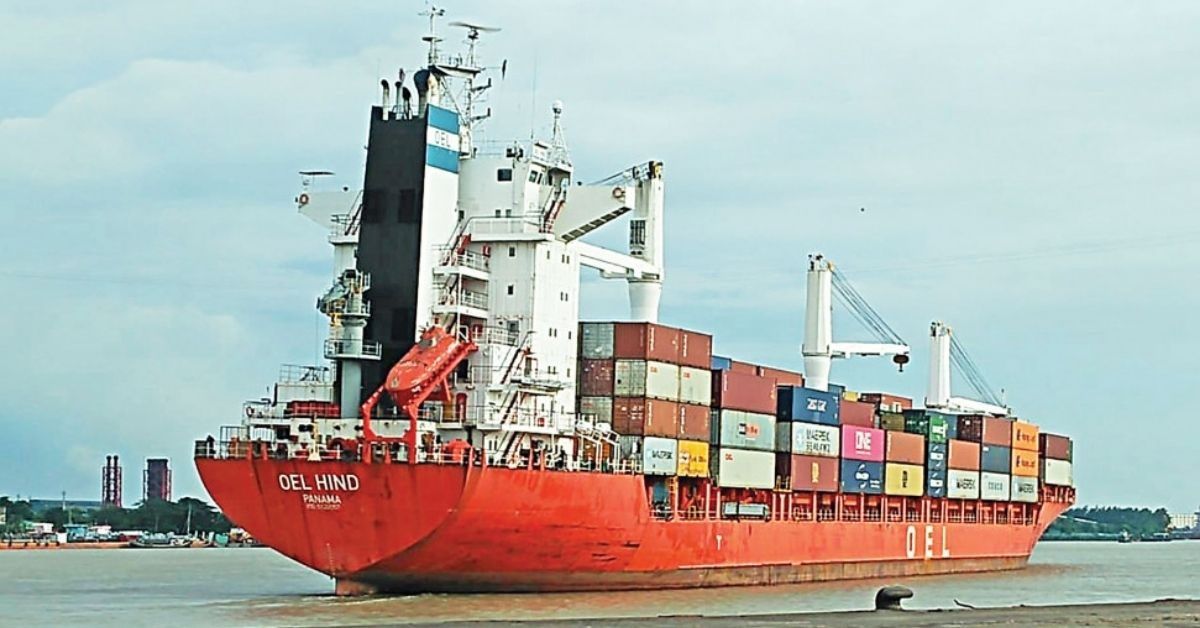Container shipping rates continued to fall in October due to declining demand. The Shanghai (Export) Containerized Freight Index (SCFI) has fallen for 17 consecutive weeks. Shipping companies have started to discontinue services or cancel voyages.
Athough container shipping prices dropped overall since the beginning of 2022, they began a continuous slide in July, and the decline accelerated into September. On Sept. 23, the SCFI, released by the Shanghai Shipping Exchange, fell to 2,072.04 points, down 10.4 percent week-on-week and about 60 percent from early 2022.
The trend continued into October. On Oct. 14, the SCFI dropped to 1,814 points, down over 70 percent from early 2022.
The rate of decline varied depending on the route. The 40-foot container rate from Shanghai to the west coast of North America dropped the most, from a high of $8,117 in February to $2,097, a drop of nearly 80 percent. The standard box price rate from Shanghai to Europe dropped from a high of $7,797 in January to $2,581, a drop of nearly 70 percent.
As a result of an oversupply of containers, many shipping companies are canceling voyages. According to data released by Drewry, a maritime consultancy, in the five weeks from Sept. 19 to Oct. 23, 122 sailings were canceled out of a total of 750 scheduled sailings on major trans-Pacific, trans-Atlantic, Asia-North Europe, and Asia-Mediterranean routes, a cancellation rate of 16 percent. Of these, 101 sailings were canceled by the world’s three largest shipping alliances combined.
COVID-Related Spike Settles
What is causing sea freight costs to continue to fall?
A manager at a Chinese shipping company who spoke to The Epoch Times under the pseudonym “Du,” believes the drop is in reaction to the earlier cost increase, which was extreme and reflected unusual conditions.
“Last year, under the influence of the pandemic, the supply chain was broken due to lockdowns and work stoppage. The ports were full of containers that could not be shipped out,” Du told The Epoch Times.
“Some middlemen could make $10,000 by selling a China–U.S. slot during peak season, which also drove up freight rates.”
“Everyone was lined up waiting for boxes … At that time, the goods could not be shipped at all, so freight rates are still rising, even higher than the cost of goods.”
In an August 2021 report by state media China Central Television, the shipping arm of a Shenzhen-based technology company said that since the second half of 2020, shipping rates have fluctuated daily. For instance, the price of shipping a container to Amazon ranges anywhere from 30,000 yuan (about $4,149) to 50,000 yuan (about $6,915).
Self-Monitoring Within the Industry
Actions within the industry also helped prices. At a time when the global sea freight quotes were soaring, CMA CGM S.A., the world’s third-largest container shipping company, announced it would stop all spot rate increases until February 2022.
“The Group is prioritizing its long-term relationship with customers in the face of an unprecedented situation in the shipping industry,” the company said in a statement on Sept. 9, 2021. The freeze affected all services operating under its brands CMA CGM, CNC, Containerships, Mercosul, ANL, and APL.
Supply and Demand Dampens Prices Further
While easing of COVID-related supply chain issues and shipping congestion lowered prices, the drop is also due to supply and demand, according to manager Du.
“There’s a shortage of goods. Many factories were affected by the power restriction policy some time ago, so they could not deliver goods normally. The whole market is out of goods. Naturally, the container prices can’t be hyped up,” he said.
“This side [China] is still insisting on the ‘Zero-COVID’ policy, scaring all foreigners away. [They] all transferred to Vietnam and India to invest in factories.”
“Many foreign trade processing enterprises [in China] did not have any orders in the second half of the year. This time [it] is really decoupling.”







